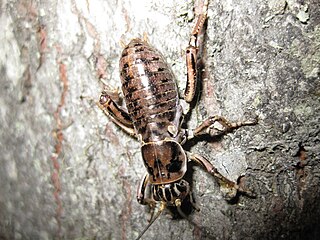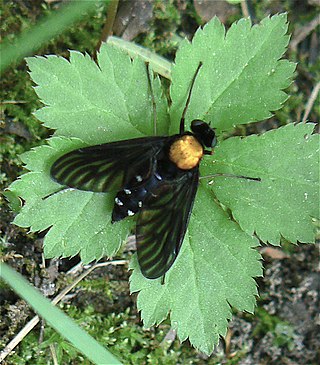Related Research Articles

Birdwatching, or birding, is the observing of birds, either as a recreational activity or as a form of citizen science. A birdwatcher may observe by using their naked eye, by using a visual enhancement device like binoculars or a telescope, by listening for bird sounds, or by watching public webcams.

The swifts are a family, Apodidae, of highly aerial birds. They are superficially similar to swallows, but are not closely related to any passerine species. Swifts are placed in the order Apodiformes with hummingbirds. The treeswifts are closely related to the true swifts, but form a separate family, the Hemiprocnidae.

The short-billed dowitcher, like its congener the long-billed dowitcher, is a medium-sized, stocky, long-billed shorebird in the family Scolopacidae.

Roger Tory Peterson was an American naturalist, ornithologist, illustrator and educator, and one of the founding inspirations for the 20th-century environmental movement.
A big year is a personal challenge or an informal competition among birders who attempt to identify as many species of birds as possible by sight or sound, within a single calendar year and within a specific geographic area. Popularized in North America, big years are commonly carried out within a single U.S. state or Canadian province, or within larger areas such as the Lower 48 contiguous states, within the official American Birding Association (ABA) area, or sometimes the entire globe. The ABA big year record of 840 species was set by John Weigel of Australia in 2019. The big year world record of 6,852 species was set in 2016 by Arjan Dwarshuis of the Netherlands.

Hump-winged grigs are insects belonging to the genus Cyphoderris, in the family Prophalangopsidae, and superfamily Grylloidea (crickets). In modern times they are known only in northwestern North America and central Asia, but the fossil record indicates a wider distribution in the past.

The Eider is a large seaduck in the genus Somateria. The three extant species all breed in the cooler latitudes of the Northern Hemisphere.
Theodore Albert "Ted" Parker III was an American ornithologist who specialized in the Neotropics. He "was widely considered the finest field birder / ornithologist that the world had ever seen."

Parcoblatta is a genus of 12 species of native North American wood cockroaches. The males often have wings and are drawn to lights, while the females are flightless.

Burnsius communis, the common checkered-skipper, formerly known as Pyrgus communis, is a species of butterfly in the family Hesperiidae. It is known as the frequently seen Pyrginae species in the northern United States by collectors and watchers alike.
The Patagonia picnic table effect is a phenomenon associated with birding in which an influx of birdwatchers following the discovery of a rare bird at a location results in the discovery of further rare birds at that location, and so on, with the end result being that the locality becomes well known for rare birds, even though in itself it may be little or no better than other similar localities. This is due to an increase in attendance leading to increased potential for rare birds to be viewed there.

The cottonwood borer is a species of longhorn beetle found in the United States east of the Rocky Mountains that feeds on cottonwood trees. It is one of the largest insects in North America, with lengths reaching 40 millimetres (1.6 in) and widths, 12 mm (0.47 in). It is the only species in the genus Plectrodera.

Polites vibex, or the whirlabout, is a grass skipper in the family Hesperiidae. The whirlabout gets its name from the landing and take off flight patterns of the adult – a circular or vortex or whirling motion. It is resident from the southeastern U.S. and West Indies to eastern Mexico through the tropics down to Argentina. During the warmer North American months, it can sometimes be found as far north as Ohio, Connecticut, and northeast Iowa.

Metaleptea brevicornis, the clipped-wing grasshopper, is a species of grasshopper from North America.

Rekoa marius, the Marius hairstreak, is a butterfly in the family Lycaenidae. It is found from Paraguay north to Sonora in Mexico. Strays may be found as far north as southern Texas. The species used to be considered rare in the southern Texas. It is the species of Rekoa found in Arizona. The habitat consists of disturbed tropical areas.

Noah Keefer Strycker is an American birdwatcher. In 2015, he set a record for a worldwide Big year of birding, seeing 6,042 of the world's estimated 10,365 bird species at the time (58.3%), becoming the first person to record half of the world's birds in one year. His journey spanned 41 countries and all seven continents from January 1 to December 31, 2015.

Paracotalpa is a genus of beetles in the family Scarabaeidae. Their known range is west of the Rocky Mountains, from southern Washington state to California and Arizona. They are nicknamed "little bears" because the adults of the genus have a fuzzy or hairy appearance.

Chrysopilus thoracicus, the golden-backed snipe fly, is a species of snipe fly in the family Rhagionidae.
Julie Zickefoose is an American nature book writer, biologist, bird artist, and blogger.
References
- ↑ Kaufman, Kenn. Kingbird Highway: The Biggest Year in the Life of an Extreme Birder. Houghton Mifflin Harcourt, pp. 2-3.
- ↑ Kaufman, Kenn. Kingbird Highway: The Biggest Year in the Life of an Extreme Birder. Houghton Mifflin Harcourt, pp. 3-6.
- ↑ Kaufman, Kenn. Kingbird Highway: The Biggest Year in the Life of an Extreme Birder. Houghton Mifflin Harcourt, pp. 6, passim.
- ↑ Kaufman, Kenn. Kingbird Highway: The Biggest Year in the Life of an Extreme Birder. Houghton Mifflin Harcourt, Appendix, pp. 317-8.
- ↑ "How to Deal With Birding FOMO". Audubon. 2018-05-18. Retrieved 2019-02-11.
- ↑ Kaufman, Kenn. Kingbird Highway: The Biggest Year in the Life of an Extreme Birder. Houghton Mifflin Harcourt.
- ↑ Kaufman, Kenn. Kingbird Highway: The Biggest Year in the Life of an Extreme Birder. Houghton Mifflin Harcourt, passim.
- ↑ "American Birding Association Awards". Archived from the original on 2008-12-20. Retrieved December 18, 2005.
- 1 2 "Interview with Ken and Kimberly Kaufman". Birds & Blooms. Archived from the original on September 8, 2012. Retrieved November 18, 2012.
- ↑ "Kaufmann at Birdwatchers' Digest". Birdwatchers' Digest. Retrieved November 18, 2012.
- ↑ "BSBO Staff". Black Swamp Bird Observatory. Archived from the original on April 1, 2013. Retrieved November 18, 2012.
- ↑ Kaufman, Kenn. "Birding the Crane Creek" . Retrieved January 1, 2013.
- ↑ Altenberg, Karin (12 April 2019). "'A Season on the Wind' Review: Giving Spring a Winged Welcome Wind-power farms, hailed as a 'green' source of energy, pose a direct and dire threat to many migrating birds". Wall Street Journal. Retrieved 2 May 2019.